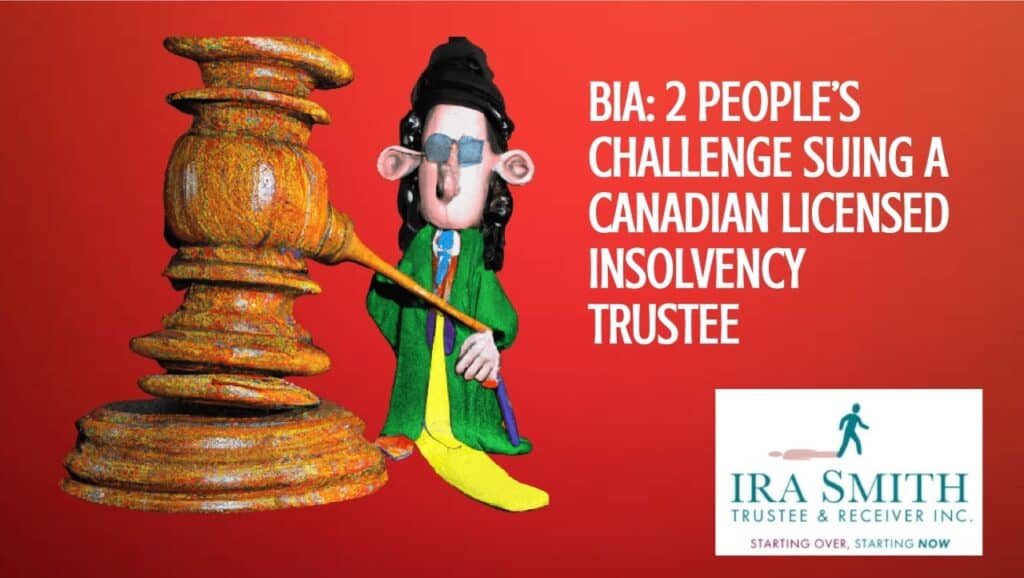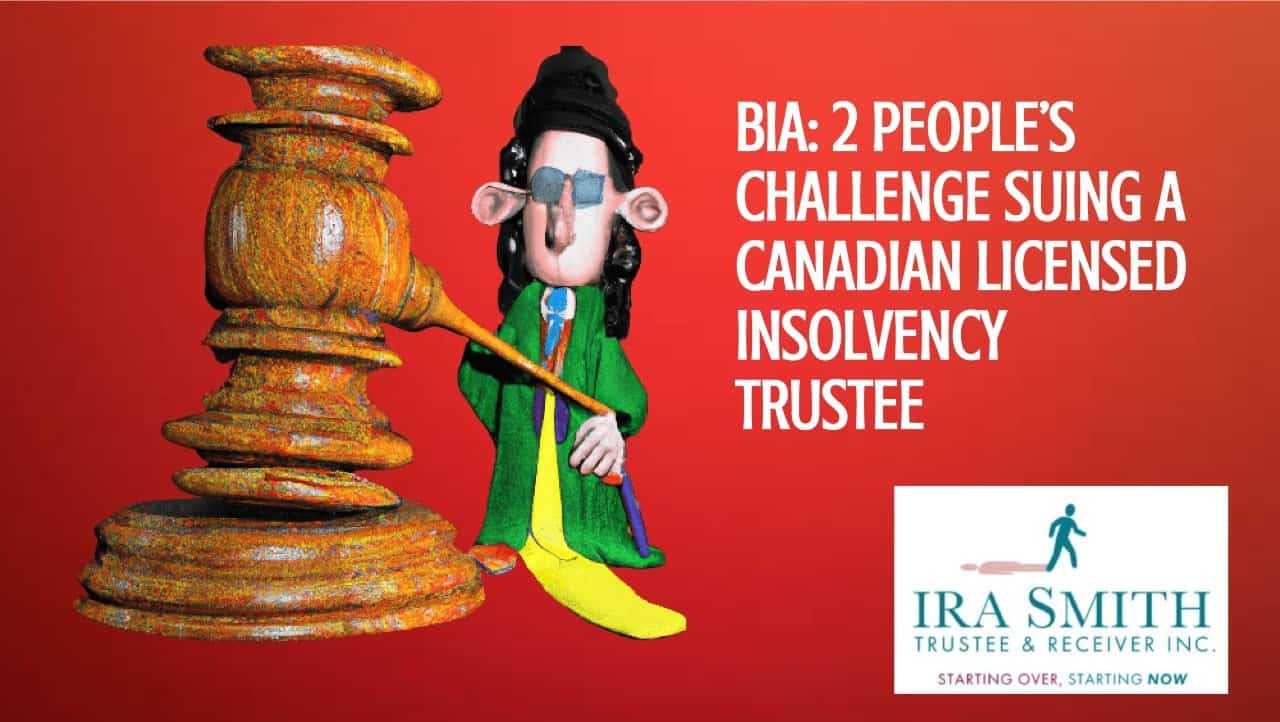Canadian Motor Freight Ltd. Introduction
Have you ever wondered what happens when a company can’t pay its debts? In the case of Canadian Motor Freight Ltd., a Mississauga, Ontario-based logistics company providing seamless transportation solutions, the situation became a legal drama that teaches us important lessons about following court orders.
What Happened to Canadian Motor Freight Ltd.?
Canadian Motor Freight Ltd. was a logistics company that ran into serious money problems. By October 2024, the company owed over $20 million to Canadian Western Bank (CWB) and couldn’t keep up with payments. This financial crisis led to a court process called “receivership,” in which a licensed insolvency trustee is appointed to take control of a company’s assets to sell the assets to help pay back all or a portion of what is owed.
The Road to Receivership
The court put Canadian Motor Frleight Ltd. into interim receivership on October 8, 2024, and then full receivership on November 15, 2024. This interim receiver appointment happened because:
- The company stopped making loan payments to CWB
- The company gave false financial information to the bank
- The business had consistent losses
- Beyond the CWB debt, they owed around $1.7 million to equipment financing companies
- They were selling their accounts receivable to another company (REV Capital) without telling CWB
- The City of Mississauga had started the tax sale proceedings process to sell CMF’s property due to unpaid taxes
Because of these serious issues, the court went from an interim receiver to a full receiver. The Receiver’s job was to take control of all Canadian Motor Freight Ltd.‘s assets and manage them to pay back creditors as fairly as possible.
The Missing Trucks Mystery
One of the most valuable things Canadian Motor Freight Ltd. owned was its fleet of trucks. These vehicles were essential assets that could be sold to help pay back some of the debt. However, instead of cooperating with the receiver as required by law, management made a fateful decision.
Rather than turning over the trucks to the receiver, company managers moved all the vehicles to a different location – a yard owned by a company called United Group of Companies. This move directly violated the court’s receivership order.
Trying to Recover the Assets
When the receiver discovered the trucks were missing, they tried to talk with United Group to gain access to the vehicles. When these discussions failed, the receiver had to return to court to get a specific “Asset Recovery Order” that directed United Group to allow the receiver onto their property to take possession of the trucks.
Unfortunately, this didn’t solve the problem. United Group and its management refused to comply with this new court order. They wouldn’t let the receiver take the trucks as directed by the court. This direct defiance of a court order is considered very serious in the Canadian legal system.
When Ignoring Court Orders Leads to Contempt
Because both Canadian Motor Freight Ltd.’s management and United Group weren’t following the court’s instructions, the receiver took further legal action. The receiver asked the court to hold both companies and their management in contempt of court for disobeying both the original Receivership Order and the Asset Recovery Order.
The evidence showed a clear pattern of defiance:
- Debtor company’s management deliberately moved the trucks to United Group’s yard despite knowing about the Receivership Order
- United Group refused to allow the receiver access to take the trucks
- United Group demanded payments they weren’t entitled to before they would cooperate
- After being specifically ordered to provide access, United Group secretly moved the trucks again to unknown locations
The judge strongly criticized these actions, saying the parties were playing a “shell game” with the company’s assets and “thumbing their nose” at the court. This kind of behaviour undermines the entire legal system.
The Contempt Ruling
The judge found that both Canadian Motor Freight Ltd.‘s management and United Group’s management were guilty of civil contempt. In Canada, three main elements must be proven for civil contempt:
- The court orders must be clear and understandable
- The people accused must have known about the orders
- The violation of the orders must have been intentional
The judge determined that all three conditions were met in this case. United Group claimed they were just “negotiating” with the receiver, but the judge dismissed this excuse, seeing it as just a delay tactic.
The judge then scheduled a sentencing date, giving the parties a chance to fix the situation before final penalties were decided. It is very normal for courts to allow those accused of contempt of court to take the right steps to purge their contempt. Most people take advantage of that opportunity so that they are no longer running afoul of court orders.
Because of these actions, the judge sentenced the leader of United Group to spend four days in jail. This person was considered the “directing mind” of the company, meaning they were the main decision-maker. The judge also ordered several other individuals involved in the case to pay different amounts of money to cover legal costs.
United Group itself received a much larger financial penalty, having to pay a significantly higher amount in costs than the individuals. These penalties show how seriously the court took the failure to follow orders in the Canadian Motor Freight Ltd. case.
Taking It to a Higher Court
Not accepting the contempt findings, both Canadian Motor Freight Ltd. and United Group (along with their management) appealed to the Court of Appeal for Ontario. They hoped the higher court would overturn the original judge’s decision.
However, on April 8, 2025, the Court of Appeal dismissed both appeals, fully supporting the original judge’s findings. The Court of Appeal explained their reasoning:
- The original judge had provided detailed and clear reasons for the contempt finding
- The so-called “negotiations” were correctly identified as delay tactics
- The companies and their management failed to show that the original judge made any serious errors
- The Receivership Order clearly stated that all of the company’s property had to be turned over to the receiver
- Management knew about this order and intentionally disobeyed it
- The sentences given by the original judge were appropriate and possibly even “on the lenient side.”
The Court of Appeal concluded with a powerful statement:
“It is a fundamental principle that orders of a court are to be obeyed. They are not to be stalled, and they are not to be negotiated. Serious consequences are to be expected by anyone who wilfully fails to obey a court order.”

The Wider Financial Problems at Canadian Motor Freight Ltd.
The case of Canadian Motor Freight Ltd. reveals a company facing enormous financial challenges. Online industry forums like InsideTransport.com had threads discussing CMF’s situation starting in October 2024, showing that people in the trucking industry were aware of the company’s troubles.
Documents from the receivership process provide more details about the company’s financial state. A Motion Record includes various documents related to the receivership, including:
- Examination of company officials to gather information about assets
- Lists of company receivables and customers
- Communications between the receiver and legal representatives
- Evidence of returned checks due to insufficient funds from earlier in 2024
- Financial statements showing significant expenses against their revenue
The 2023 financial statements for the company showed sales of over $21 million but also revealed major expenses.
All these factors contributed to the company’s inability to meet its financial obligations, ultimately leading to receivership.
How Receivership Works in Canada
To better understand the Canadian Motor Freight Ltd. case, it helps to know how receivership works in Canada. Receivership is a legal process used when a company can’t pay its debts and creditors need help recovering their money.
The Receivership Process
- Court Appointment: A creditor (like a bank) asks the court to appoint a receiver, usually when a company has defaulted on loans.
- Taking Control: Once appointed, the receiver takes control of the company’s assets. Company management must cooperate and turn over all property and records.
- Asset Management: The receiver evaluates assets, may continue running the business temporarily, and eventually sells assets to generate funds.
- Debt Repayment: Money from asset sales goes toward paying creditors according to legal priorities.
For Canadian Motor Freight Ltd., this process began when Canadian Western Bank sought the court’s help to recover their $20+ million. The receiver was appointed to manage the company’s assets, including the valuable truck fleet that later became the center of the contempt case.
Why Court Orders Must Be Followed
The Canadian Motor Freight Ltd. case highlights a crucial aspect of our legal system: court orders aren’t suggestions – they’re commands that must be obeyed. There are several reasons why following court orders is essential:
Legal Consequences
As seen with Canadian Motor Freight Ltd. and United Group, failing to follow court orders can lead to:
- Being found in contempt of court
- Financial penalties
- Potential jail time for individuals
- Damage to business and personal reputations
System Integrity
Our legal system works only if people respect court authority. If people could pick and choose which orders to follow, the entire system would break down. The Court of Appeal emphasized this point in its ruling on this case.
Fair Resolution of Disputes
Court orders ensure that conflicts are resolved fairly. In receivership cases like Canadian Motor Freight Ltd., the process helps ensure that creditors are treated according to established legal priorities rather than allowing some parties to gain unfair advantages.
The Impact on the Trucking Industry
While the Canadian Motor Freight Ltd. case focuses on one company’s struggles, it raises questions about the broader Ontario trucking industry. The trucking sector faces numerous challenges:
Rising Costs
The financial documents from Canadian Motor Freight Ltd. highlight the significant costs of running a trucking operation:
- Fuel costs in the millions
- High insurance premiums
- Equipment financing payments
- Maintenance expenses
Thin Profit Margins
Trucking companies often operate on slim profit margins, making them vulnerable when costs rise or when economic downturns reduce shipping demand.
Competitive Pressures
The logistics industry is highly competitive, with companies often underbidding each other to win contracts, sometimes at unsustainable rates.
Regulatory Requirements
Trucking companies must comply with numerous regulations regarding safety, driver hours, vehicle maintenance, and environmental standards, all of which add to operational costs.
While we can’t say from this single case whether the entire Ontario trucking industry faces similar problems, the Canadian Motor Freight Ltd. situation highlights the financial pressures that can push logistics companies to the breaking point.
Lessons from the Canadian Motor Freight Ltd. Case
The story of Canadian Motor Freight Ltd. offers several important lessons for businesses and individuals:
1. Court Orders Are Non-Negotiable
The primary lesson is that court orders must be followed. The Court of Appeal made it clear that orders “are not to be stalled, and they are not to be negotiated.”
2. Transparency with Creditors is Essential
Canadian Motor Freight Ltd.‘s provision of false financial information to CWB contributed to its problems. Being honest with lenders about financial difficulties might lead to workable solutions before receivership becomes necessary.
3. Legal Problems Compound When Ignored
What started as financial difficulties for Canadian Motor Freight Ltd. escalated into contempt of court findings when company leadership tried to hide assets rather than comply with the receivership process.
4. Expert Help is Valuable During Financial Distress
Companies facing financial problems should seek qualified legal and financial advice early. Professional guidance can help navigate difficult situations and potentially avoid the more severe consequences of receivership.
Conclusion: Respect for the Legal Process
The Canadian Motor Freight Ltd. receivership saga demonstrates the serious consequences that can follow when court orders are ignored. From the initial financial troubles to the contempt findings and appeals, this case reinforces a fundamental principle of our legal system: court orders must be respected and obeyed.
For businesses facing financial difficulties, the case serves as a cautionary tale about the importance of transparency, cooperation, and compliance with legal processes. While financial problems are challenging, attempting to hide assets or obstruct court-appointed receivers only makes the situation worse.
The Court of Appeal’s firm stance in upholding the contempt findings against Canadian Motor Freight Ltd. and United Group sends a clear message about the importance of court authority in ensuring that financial disputes are resolved fairly and according to established legal procedures.
As we follow developments in the trucking and logistics industry, the Canadian Motor Freight Ltd. case will likely be remembered as an important example of how not to handle a company’s financial crisis and the serious consequences that can follow when court orders are defied.
I hope you’ve found this Canadian Motor Freight Ltd. Brandon’s Blog helpful. If you or someone you know is struggling with too much debt, remember that the financial restructuring process, while complex, offers viable solutions with the right guidance.
At the Ira Smith Team, we understand the financial and emotional components of debt struggles. We’ve seen how traditional approaches often fall short in today’s economic environment, so we focus on modern debt relief options that can help you avoid bankruptcy while still achieving financial freedom.
The stress of financial challenges can be overwhelming. We take the time to understand your unique situation and develop customized strategies that address both your financial needs and emotional well-being. There’s no “one-size-fits-all” approach here—your financial solution should be as unique as the challenges you’re facing.
If any of this sounds familiar and you’re serious about finding a solution, reach out to the Ira Smith Trustee & Receiver Inc. team today for a free consultation. We’re committed to helping you or your company get back on the road to healthy, stress-free operations and recover from financial difficulties. Starting Over, Starting Now.
The information provided in this blog is intended for educational purposes only. It is not intended to constitute legal, financial, or professional advice. Readers are encouraged to seek professional advice regarding their specific situations. The content should not be relied upon as a substitute for professional guidance or consultation. The author, Ira Smith Trustee & Receiver Inc., and any contributors do not assume any liability for any loss or damage.




